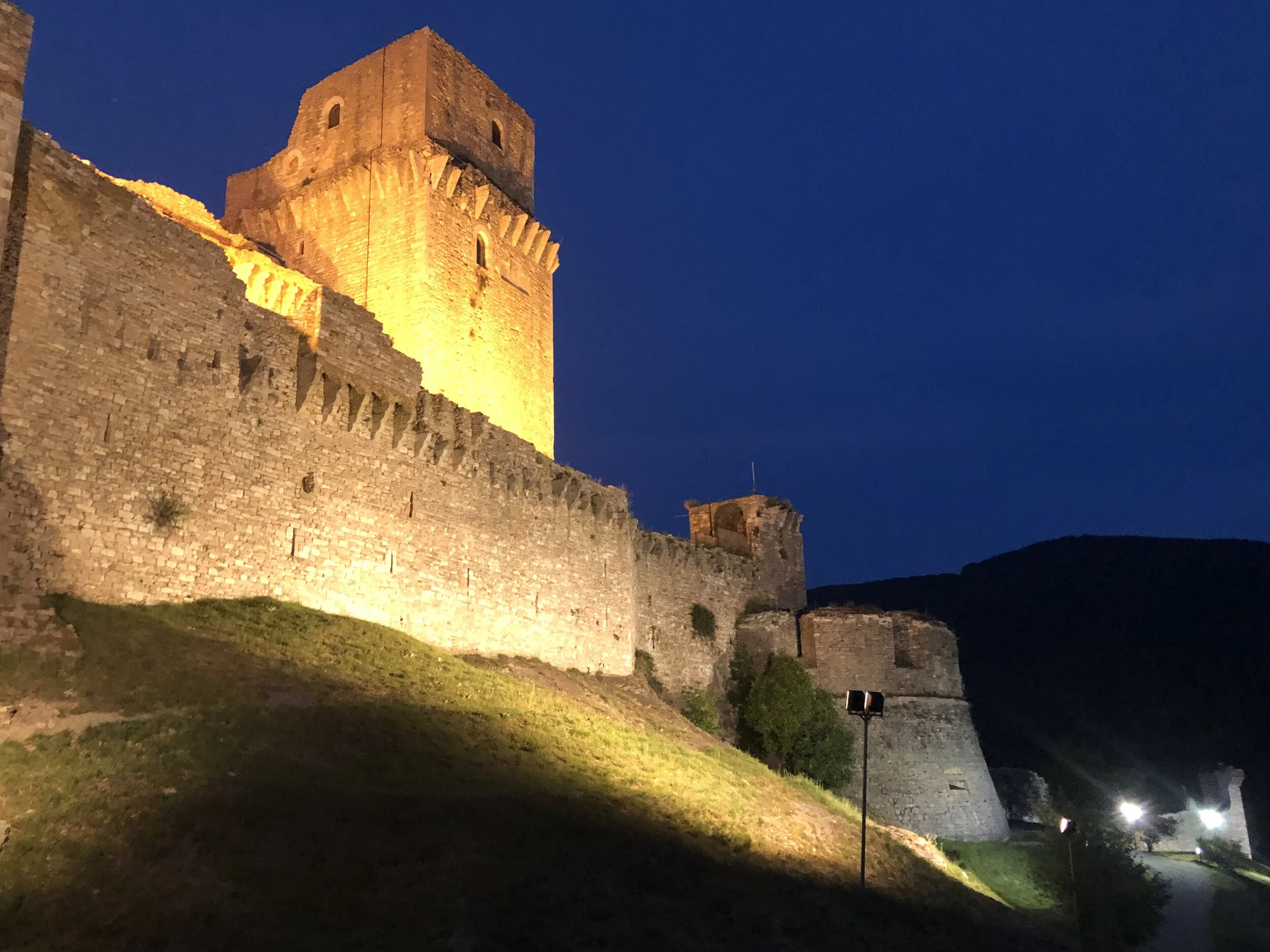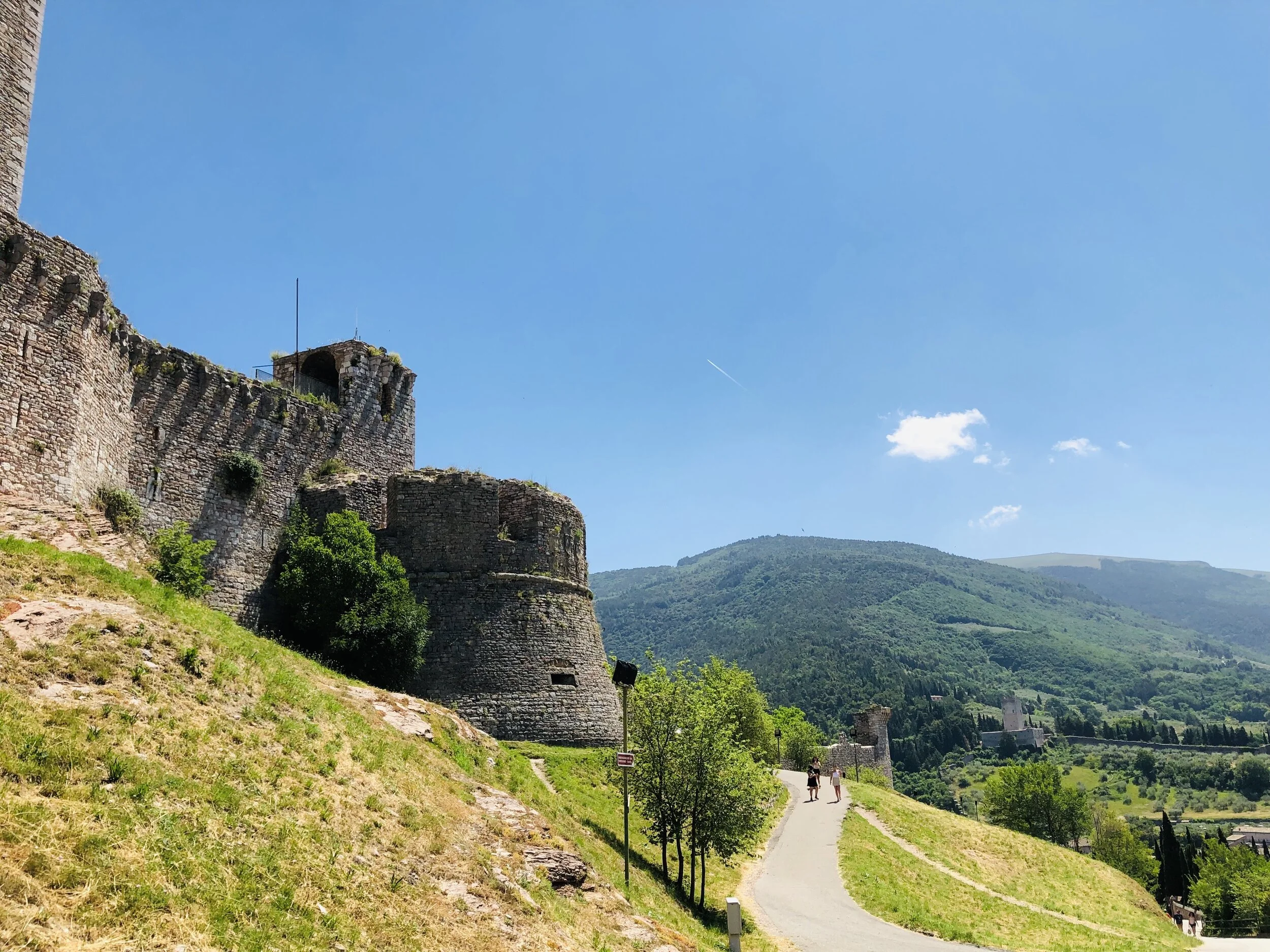ROCCA MAGGIORE
Overlooking Assisi is the Rocca Maggiore — the Major Fortress. We begin our pilgrimage by making the somewhat strenuous walk upward through the town to this castle. By doing so, we are charting the social, cultural and class geography of this city. Lording over all of it is this military stronghold. Over the centuries it was maintained to secure the power-relations of the German occupiers and of the Church. It also was the symbolic and actual pinnacle of political and social power in Assisi itself. In descending order below Rocca Maggiore were the neighborhoods and homes of the haves and the have-nots.
We begin our pilgrimage gaining a sense of the construction of the 13th century world Francesco di Pietro di Bernardone was born into and was expected to maintain, support, give his allegiance to, and thrive in.
“The first information about the Rocca Maggiore dates back to 1174, when it was rebuilt after the conquest of Assisi by the imperial troops led by Christian of Mainz (1174); but it perhaps already existed at the time of the Lombards. It is therefore likely that – on the remains of a pre-existing fortification – the fortress had been reconstructed by the Swabians, as feudal castle: narrations of Frederick Duke of Swabia – the future emperor FrederickII – resided there in his youth, hosted by Corrado Lutzen.
“The fortress stands on a hill that overlooks Assisi: above its walls stands out the ‘Maschio’ tower, from where you can enjoy a magnificent panorama of the city and of the Umbrian Valley, from Perugia to Spoleto. Since ancient times, the location of the fortress was considered sacred and essential to defend the town.
“In 1198 the castle was destroyed following a popular riot to prevent it from falling into the hands of a papal governor: not unreasonably, the Assisans saw in it a symbol of the imperial oppression.
“The fortress was rebuilt in 1365 by Cardinal Egidio Albornoz (then engaged in submission of the main cities of the peninsula) as a lookout: a typical example of medieval military architecture. Since then, the fortress was involved in every attempt to be conquered, in alternation, between the various governments, of the lords of different cities and its defensive role ratcheted in time with changes in the structure and with the construction of towers and bastions.”





